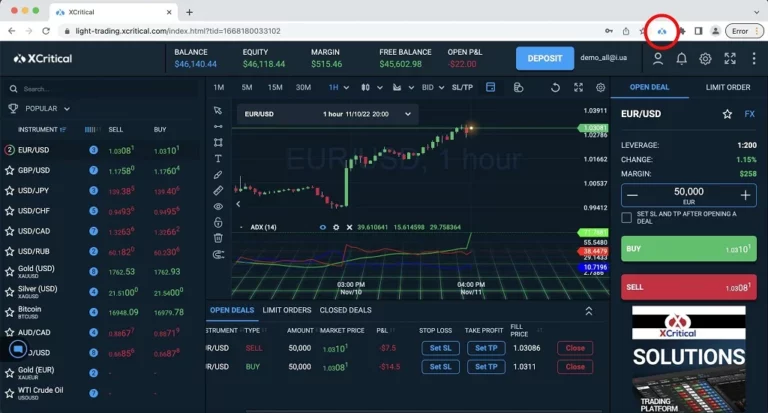Content
By greatly reducing paperwork and errors, blockchain significantly reduces overhead and transaction costs, and reduces or eliminates the need for third parties or middlemen to verify transactions. RippleNet, a blockchain-based network, has partnered with over 300 financial institutions globally. It facilitates Proof of work cross-border payments in minutes with significant cost savings compared to traditional methods.
Faster and Cheaper Cross-Border Payments:
Companies like Patientory and https://www.xcritical.com/ Avaneer Health, for example, are among those innovating with blockchain technology in the healthcare industry. As blockchain networks grow in popularity and usage, they face bottlenecks in processing transactions quickly and cost-effectively. This limitation hampers the widespread adoption of blockchain for mainstream applications, as networks struggle to handle high throughput volumes, leading to congestion and increased transaction fees.
Top 10 Benefits of Using Blockchain in Banking for Enhanced Efficiency
Outside of public keys, there are few identity and access controls in this type of network. These examples illustrate how blockchain technology can empower nonprofits to enhance their fundraising efforts while building trust with their supporters. This innovative approach has attracted a growing number of supporters who appreciate the ability to see exactly how their contributions are being utilized. Another compelling case study blockchain payments is that of Giveth, a platform designed specifically for decentralized charitable giving.
Q4: How is blockchain used to monitor payment transactions?
All network participants with permissioned access see the same information at the same time, providing full transparency. This capability enables members to view the entire history of a transaction and virtually eliminates any opportunity for fraud. Cross-border payments often get bogged down by multiple banks and currency conversions, leading to delays and high fees.
- Ripple, a blockchain company, has partnered with numerous banks like Santander and Standard Chartered to leverage their RippleNet platform.
- Adding restricted access to an encrypted record-keeping ledger appeals to certain organizations that work with sensitive information, like large enterprises or government agencies.
- Blockchain technology in payment processing has benefits including enhanced security transparency, traceability, cost-efficiency & global reach.
- Each transaction is encrypted and linked to its previous block, making it computationally impractical to alter or tamper with the data.
- Cryptocurrencies, such as Bitcoin and Ethereum, have gained significant traction as digital payment methods.
- Most financial institutions are pursuing hybrid approaches—combining blockchain’s advantages with traditional banking expertise rather than viewing it as a complete replacement for existing systems.

The Hyperledger Fabric Blockchain is being used by a number of companies, including IBM and Samsung, to develop smart contracts for a variety of applications. For example, Hyperledger Fabric is being used to develop smart contracts for supply chain management, healthcare, and finance. Decentralized consensus mechanisms play a pivotal role in enhancing security and trust in Blockchain networks. Traditional centralized systems rely on a single authority for validation, making them vulnerable to single points of failure and manipulation. However, Blockchain employs consensus algorithms, such as Proof of Work (PoW) and Proof of Stake (PoS), to achieve distributed agreement among network participants. One example of how Blockchain is being used for land registry is the Estonian Land Registry, which is the first national land registry to use Blockchain technology.
These preselected organizations determine who submit transactions or access the data. A consortium blockchain is ideal for business when all participants need to be permissioned and have a shared responsibility for the blockchain. With blockchain, as a member of a members-only network, you can rest assured that you are receiving accurate and timely data. And that your confidential blockchain records are shared only with network members to whom you granted access.
This is particularly beneficial for regulatory compliance, where accurate and up-to-date data is crucial. Blockchain in banking streamlines this process by enabling peer-to-peer transactions that eliminate the need for intermediaries. When transactions are processed directly on a blockchain, there’s no need to pay multiple parties to verify and settle the transaction.
Blockchain technology produces a structure of data with inherent security qualities. It’s based on principles of cryptography, decentralization and consensus, which ensure trust in transactions. In most blockchains or distributed ledger technologies (DLT), the data is structured into blocks and each block contains a transaction or bundle of transactions. The concept of blockchain was first introduced in 2008 by an individual or group using the pseudonym Satoshi Nakamoto.
Following the discussion on cost savings, another compelling advantage of blockchain in banking is the enhanced transparency it brings. This transparency is not just a buzzword; it fundamentally transforms how transactions are conducted and monitored in the financial sector. Before launching a blockchain-based payment system, conduct thorough testing to ensure its functionality, security, and efficiency. Involve end-users and collect feedback to identify areas for improvement and iterate on the solution based on user needs and preferences. Each transaction is encrypted and linked to its previous block, making it computationally impractical to alter or tamper with the data. Additionally, public and private key cryptography is used to authenticate transactions and ensure that only authorized parties can access and modify the data.

Blockchain technology holds immense potential to transform the way we conduct payments. Considering these challenges and taking appropriate measures to address them is vital to ensure the successful implementation and adoption of blockchain technology in the payments industry. By addressing these considerations, businesses and individuals can unlock the full potential of blockchain and harness its benefits while mitigating potential risks. Blockchain can enhance supply chain financing by providing a transparent and immutable record of transaction histories. Using blockchain, lenders can verify the authenticity of invoices and track the movement of goods throughout the supply chain.

Blockchain payment systems must provide user-friendly interfaces and seamless experiences to drive widespread adoption. This distributed nature ensures that transaction records are stored in multiple locations, enhancing security and resilience and preventing a single point of failure. While the future of Blockchain holds immense potential, there are still a few challenges that need to be overcome. Standardization, scalability, and security are areas that require further attention and development.
Blockchain offers a novel method for charitable donations, promoting transparency, efficiency, and donor trust. Its unchangeable ledger enables donors to track their contributions in real time, validating their application and bolstering trust. Importantly, by employing decentralized identity solutions, blockchain also preserves donor anonymity, fostering increased donations.
The benefits of blockchain, particularly the one about circumventing currency exchange, mainly relates to transactions operating along the same blockchain. These types of chains are often used in settings where multiple parties or organizations need access to information. In an industry troubled by data breaches, blockchain can help healthcare improve security for patient data while making it easier to share records across providers, payers and researchers.
Whether or not you can advertise differences in prices may be up to the legal codes in your state or city. Enabling companies of all sizes to trade across borders, helping to drive global economic growth. Idea Usher is a pioneering IT company with a definite set of services and solutions. We aim at providing impeccable services to our clients and establishing a reliable relationship.
Leave a Reply